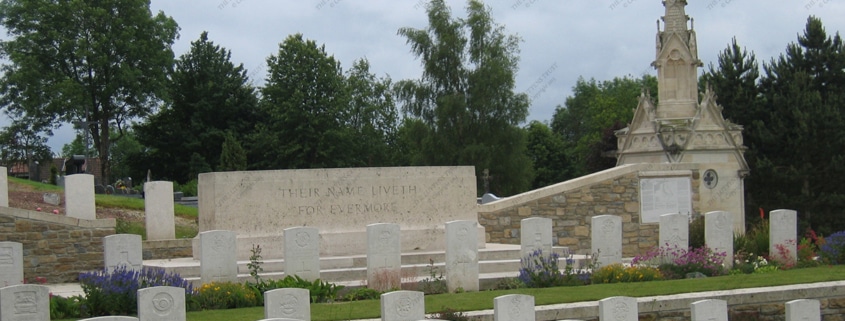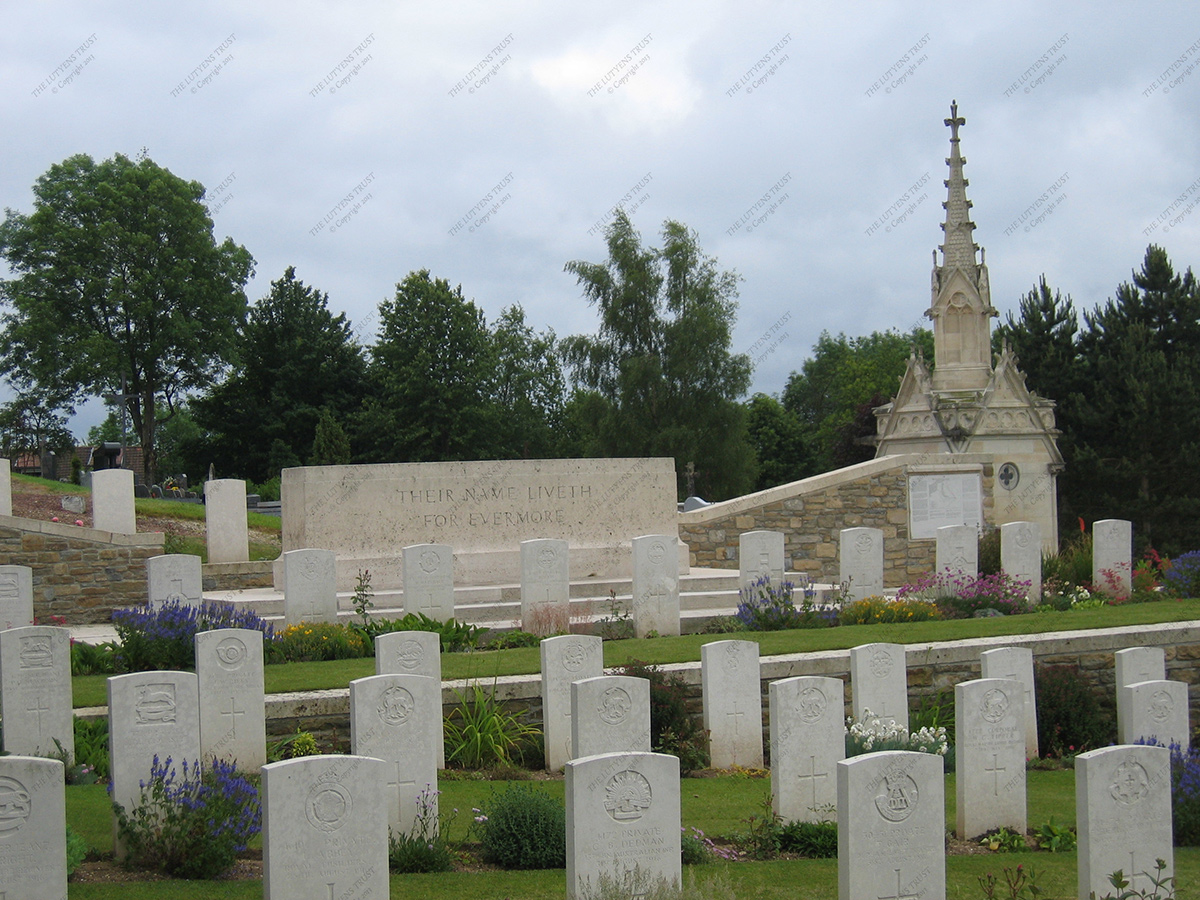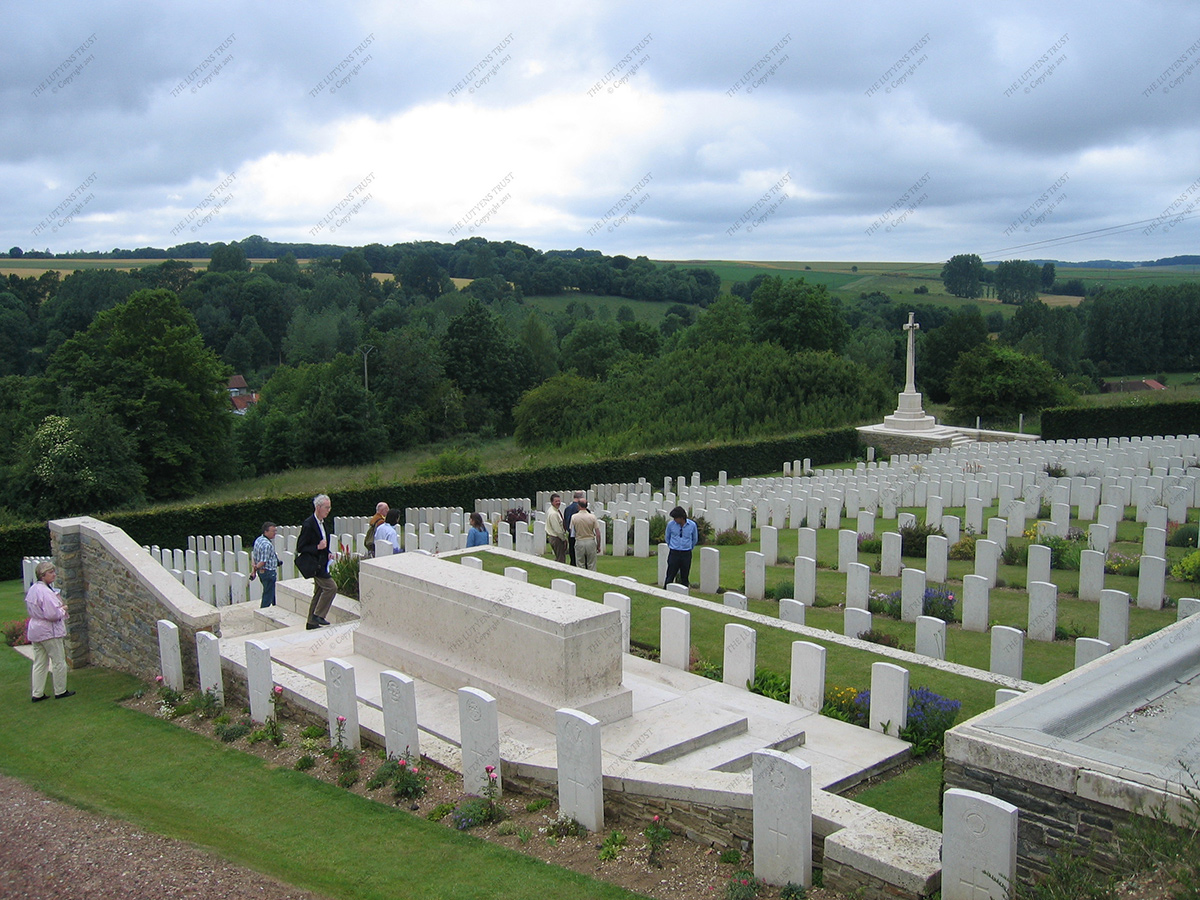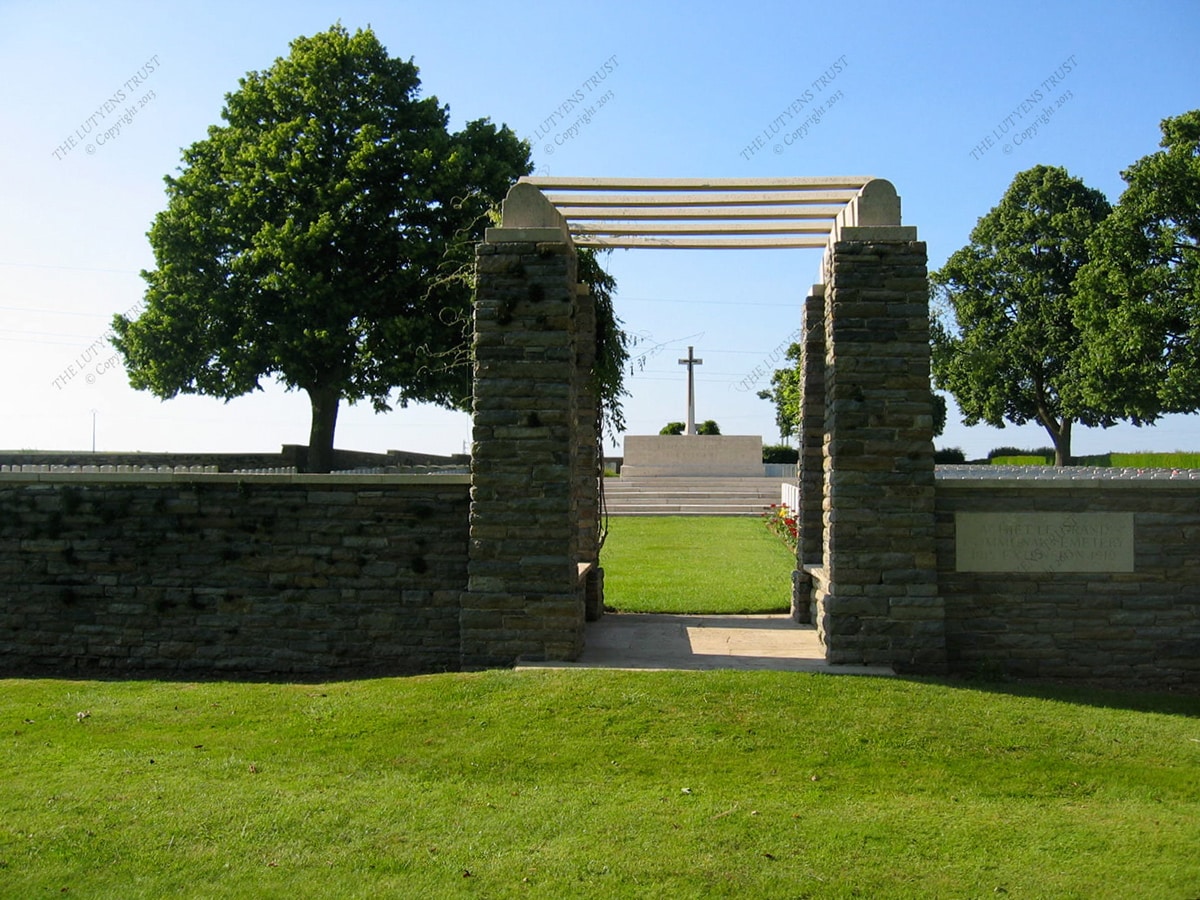
Description
Gézaincourt C.C.E. would seem to have been one of the first cemeteries to be designed by Lutyens for the Imperial War Graves Commission and was possibly used as a model for others. It is certainly a good example of picturesque planting on a sloping, irregular site and a product of the cooperation between Lutyens and Jekyll. Miss Jekyll originally proposed; for the perimeter shrub planting blackthorn, whitethorn, birch and hazel, skimmia, lauristinus, lavender, St Helena and weigela; between the rows of graves, lavender, fuschia gracilis, rose Madame Plantier, blush gallica, St Helena and rhus; all over the cemetery groups of roses: Madame Plantier, Scotch briars and blush gallicas, patches of iris pallida and iris florentina, and yew around the seats. The disposition of the two lodges (omitted when executed), the Great War Stone, Blomfield’s Cross of Sacrifice, the boundary walls and the irregular disposition of the graves in typical of many other British war cemeteries. Gézaincourt C.C.E., near Doullens, contains 594 British Empire burials, including 2 Indians and 4 Chinese, and also 76 German graves. The Assistant Architect was Major G. H. Goldsmith. It was constructed in 1922. (Amery et al, 1981, Cat no. 292)Bibliography
Amery, C., Richardson, M. and Stamp, G., (1981) Lutyens, the Work of the English Architect Sir Edwin Lutyens (1869-1944): Hayward Gallery London, 18 November 1981 – 31 January 1982. London: Arts Council of Great Britain.Also Cited In
Geurst, J. (2010) Cemeteries of the Great War by Sir Edwin Lutyens. Rotterdam: 010 Publishers.Listing Grade
Coming soonListing Reference
Client
Imperial War Graves Commission



